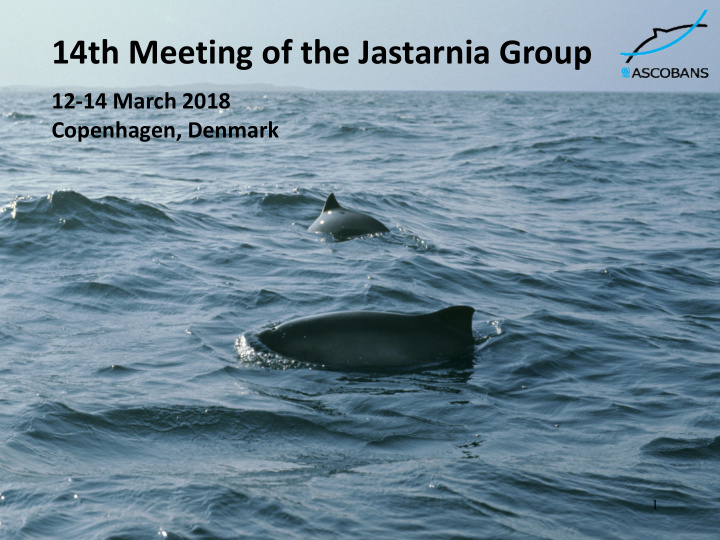



14th Meeting of the Jastarnia Group 12-14 March 2018 Copenhagen, Denmark 1
Implementation and progress of the JP and WBBKP – Summary • HP coordinator present • Participation from HELCOM secretariat • Discussion on harbour porpoise population genetics in the Baltic Sea Region • Discussion on the deployment of Porpoise Alerting devices (PALs) in German Baltic waters and the need for monitoring of this effort 2
Baltic Sea EBSAs 1. Northern Bothnian Bay 1 . 2. Kvarken Archipelago 3. Åland Sea, Åland Islands and 2 . the Archipelago Sea of Finland 4 . 4. Eastern Gulf of Finland 3 . 5. Inner Sea of West Estonian 5 . Archipelago 9 . 6. Southeastern Baltic Sea 7 . Shallows 6 . 7. Southern Gotland Harbour Porpoise Area 8 . 8. Fehmarn Belt 9. Fladen and Stora and Lilla Middelgrund 3
Southern Gotland Harbour Porpoise Area • Unique offshore banks and varied and diverse coastal areas • Shallow areas create conditions for high productivity of filter-feeding animals that form the food base for flatfish and large amounts of wintering birds – Core distribution area of the critically endangered harbour porpoise ( Phocoena phocoena ) subpopulation in the Baltic Sea – Important area for harbour seal ( Phoca vitulina vitulina) – The main wintering area for the endangered long-tailed duck 4 ( Clangula hyemalis )
SAMBAH II • Preliminary plan to apply for LIFE funding in spring 2019, earliest possible start date summer 2020 Acoustic follow-up survey • Improved detection function reduced CI for the abundance estimate • Pilot surveys in waters >80 m • More fine-scale grid in main porpoise area in the Baltic Proper 5
SAMBAH II – Options discussed • Data collection on spatio-temporal fishing effort with relevant gears (commercial and recreational) • Spatio-temporal bycatch risk assessment • Social impact assessment of fisheries • High definition digital surveys for detection of calves 6
Action points 7
Monitor and estimate abundance and distribution National monitoring should be established or further improved, coordinating between countries Support SAMBAH II to start in 2020 (fieldwork in 2021), noting that management authorities are likely to be required as formal partners for a LIFE application Continue to cooperate on inter-SCANS surveys of the WBBK population 8
Monitor, estimate and reduce bycatch Establish system to monitor bycatch convering all sizes of fishing vessels. Discussion at AC24 Spatio-temporal risk assessment of bycatch Continue to develop, conduct research on and implement use of alternative fishing gear and pingers not audible to seals Assess uncertainty in bycatch rates and estimate the effort needed for bycatch monitoring 9
Increase involvement, awareness and cooperation Coordinating reporting programmes and national databases for opportunistic sightings, bycatches, strandings and necropsies Investigate habitat use and protect important areas Promote research on consequences of impacts on prey communities (WBBK) 10 10 10 10
Monitor and mitigate impact of underwater noise Baseline studies of underwater noise as a reference point for future impact assessments Investigate detrimental effects of various types of sounds Adopt regulations on reduction of sounds emissions from construction of offshore windfarms 11 11 11 11 11
Cross-cutting issues and misc. Parties are encourage to take turns hosting the JG meetings and ensuring that the necessary funding is available A plan has been produced for the continuation of the Baltic Sea/WBBK/North Sea Coordinator 12 12 12 12 12
Recommend
More recommend